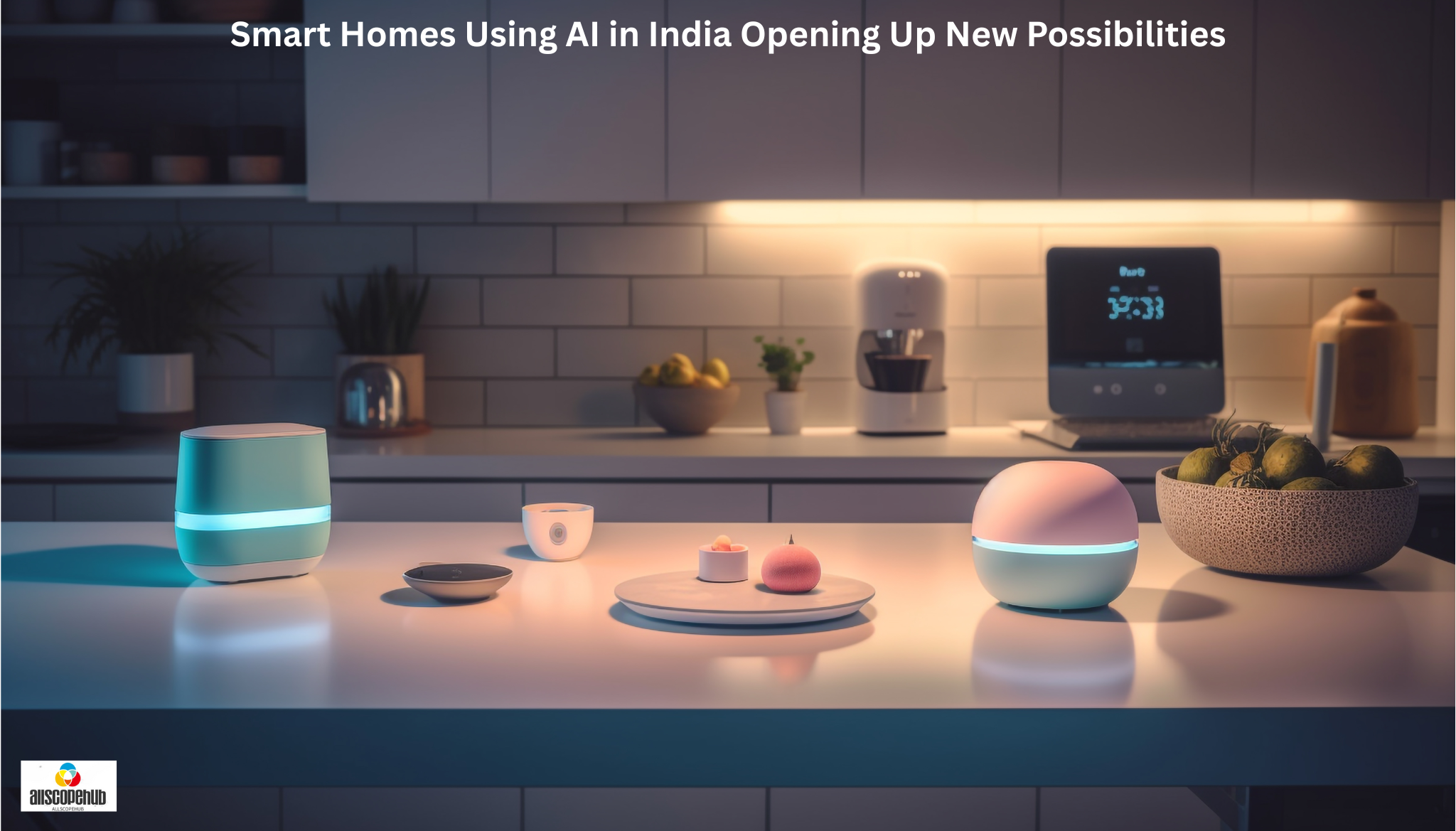Your Home Is Changing. Not Later. Now.
Let’s not pretend the idea of “smart homes” hasn’t sounded like science fiction for most of us. AI? Automation? That’s the stuff of movies. But here’s what no one tells you: it’s already here, and it’s not flashy or robotic. It’s quiet. Seamless. Almost invisible. That’s what makes it powerful.
Across Indian cities, apartments and houses are starting to “think.” From turning off lights when no one’s looking to reminding you about that leaking faucet, homes are becoming helpers. Not just responsive, but proactive. This isn’t a rich-person upgrade—it’s a lifestyle shift. Whether you’re in Bengaluru or Bhubaneswar, you might already be living with some form of AI. If not, you will soon.
This is about smart homes using AI in India, opening up new possibilities, and how they’re less about technology and more about life itself. So, what’s changing behind those concrete walls and colorful drapes? Let’s take a look.
It Starts Small: One Light Bulb, One Voice Command, One Big Shift
The idea of a smart home usually starts with something tiny. It could be a voice assistant that plays your favorite playlist while you cook. Or a motion sensor that switches off the light when you forget.
But small things don’t stay small for long.
- Smart plugs that learn your usage patterns
- AC units that adjust temperature based on the weather
- Water purifiers that remind you when it’s time to change the filter
It’s this chain of mini-upgrades that eventually adds up to a completely different way of living. Not dramatic. Just better.
According to NielsenIQ’s commentary on smart homes in India, this trend is accelerating due to growing awareness of sustainability, health, and time-saving technology. What once seemed elite is now inching toward everyday reality.
Smart Homes Aren’t About Being Cool—They’re About Being Comfortable
You don’t build a smart home because you want to show off. You do it because you’re tired. Of forgetting to lock the door. Of coming home to a hot, stuffy room. Of the daily chaos that could be… easier.
That’s where AI comes in. It removes friction.
Imagine this:
- You walk in after a long day, and your lights adjust automatically.
- The geyser’s already heated because it knows your schedule.
- You get a ping on your phone—your groceries have been delivered to the smart locker downstairs.
It’s not a luxury. It’s sanity.
Indian Families Are Discovering AI Can Think Like Them
Now this is where things get truly personal.
In Indian households, where multiple generations often live under one roof, routines are complex. Dadi ji needs her medicine on time. Your son has online classes. You’re managing work calls and dinner at the same time.
AI doesn’t just automate—it learns.
- It adjusts to your family’s habits
- It sends reminders for medication, bills, and chores
- It lets you check on your home remotely, whether you’re at the office or in another city
It’s like having another family member. One that never forgets, doesn’t argue, and always has your back.
Urban India Is Building the Blueprint for AI-First Homes
You don’t have to look far. Just take a stroll through a new apartment complex in Pune, Noida, or Hyderabad. The sales pitch has changed. It’s not just about balconies and gym access anymore—it’s about smart security, AI-controlled lighting, and intelligent water management.
Builders are betting big on this trend. And it’s working.
Why?
- People want to feel safer
- They want to save energy (and money)
- They want ease without learning 50 different apps
And developers are delivering touch panels, app-based controls, and AI-driven community systems that manage garbage collection, parking, and even visitor entry.
In fact, Future Market Insights reports that India’s smart home automation market is set to grow rapidly by 2034, thanks to falling hardware costs and increasing mobile penetration. The foundations for AI-first living are being laid now.
But Wait—What’s Stopping the Rest of India from Joining In?
Let’s keep it real. Not everyone’s home is smart yet. And there are some good reasons.
- The tech still feels intimidating
- Setups can seem complicated
- Not everyone knows where to start
But these gaps are closing fast. Entry-level kits are now available for less than a smartphone. Tutorials are in multiple languages. And companies are offering 24/7 support. The excuses are fading.
What’s left is a simple question: Do you want your home to work with you, or against you?
It’s Not About Tech. It’s About Trust.
One thing Indians value deeply is trust—in people, in routines, in traditions. So it’s no surprise that many people hesitate to “hand over” control of their homes to AI.
But here’s the truth: the best smart home tech doesn’t take control away. It gives it back.
- You don’t lose decisions. You gain reminders.
- You don’t lose privacy. You gain protection.
Most AI home systems are designed to notify you, not override you. You’re still the boss—just with more information, fewer worries, and better timing.
What’s Coming Next Is Bigger Than Any of Us
We’ve barely scratched the surface.
Soon, homes will:
- Predict illnesses by analyzing sleep patterns
- Suggest power-saving tips based on your daily habits
- Adjust the lighting based on your mood or voice tone
This isn’t fiction. Indian startups are already building this tech.
And it won’t be limited to cities. Solar-powered AI systems are being tested in villages. Smart irrigation, bright kitchens, even smart cow sheds—it’s all coming.
The smart home movement isn’t about making homes fancier. It’s about making life more humane, manageable, and meaningful.
Okay, So Where Do You Start?
If all this sounds exciting—but also a little overwhelming—here’s a simple path:
- Start with a smart plug or bulb. Easy to install. Under ₹1,000.
- Get a voice assistant. Hindi, Tamil, and Bengali are supported.
- Add sensors for motion, gas, or door entry.
- Explore security cameras or smart locks if safety is your priority.
- Use apps that help you control everything in one place.
You don’t need to upgrade everything at once. Think of it like adding a helper, one task at a time.
Smart Homes Aren’t About the Future. They’re About Today.
You’ve probably heard people say, “AI is the future.” But the truth is, it’s not coming someday. It’s already in your neighbor’s living room. It’s in your colleague’s kitchen. And it’s slowly creeping into your routine—maybe through your phone, maybe your TV.
The question is, do you want to ignore it, or do you want to shape it?
Your Home Is Ready. Are You?
The homes we grew up in were built with bricks, locks, and switches. The homes we’re building now? They listen. They learn. They look out for us.
And if we do it right, they’ll feel less like machines and more like family.
So go ahead. Make one small smart move. And let your home do the rest. Because this isn’t about AI—it’s about you—living smarter, feeling safer, and finally letting your home take care of you.



